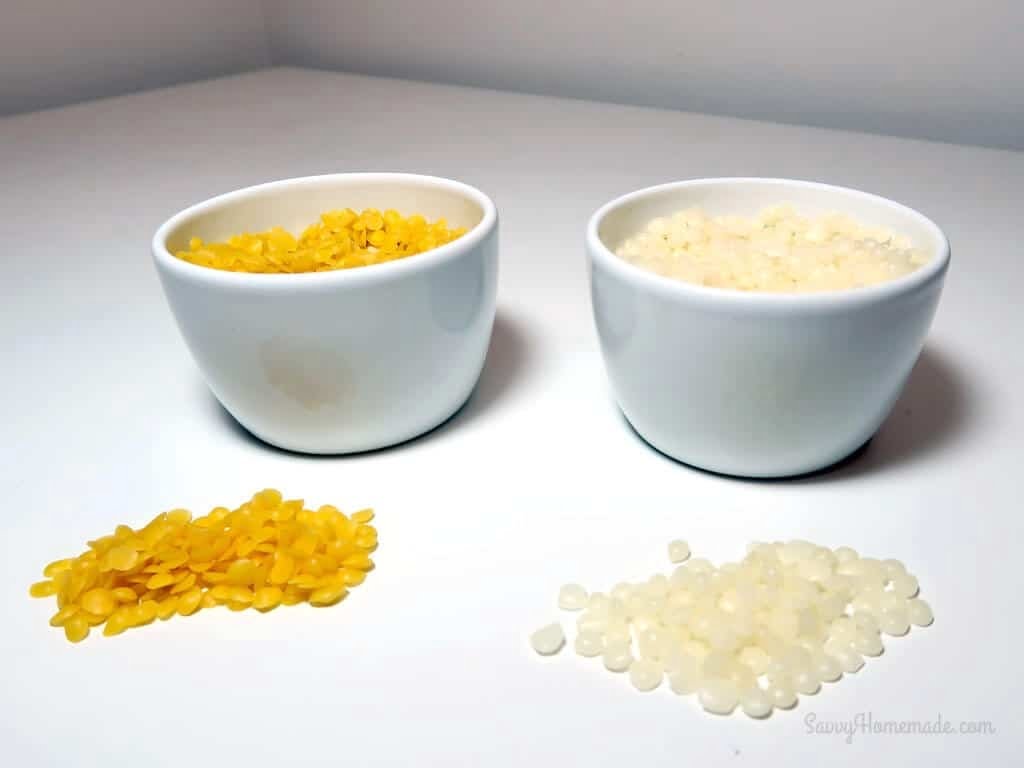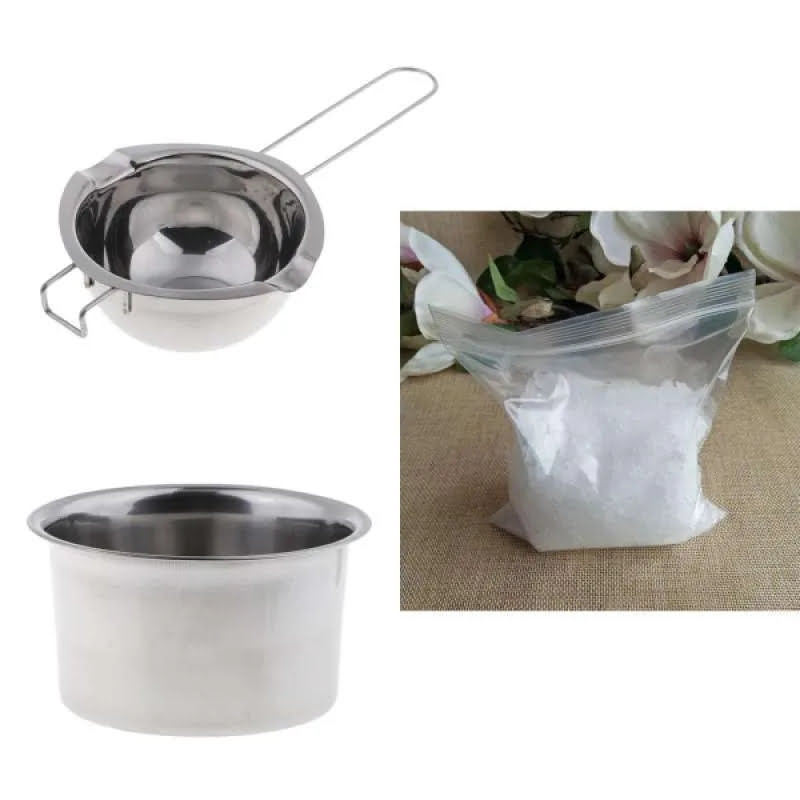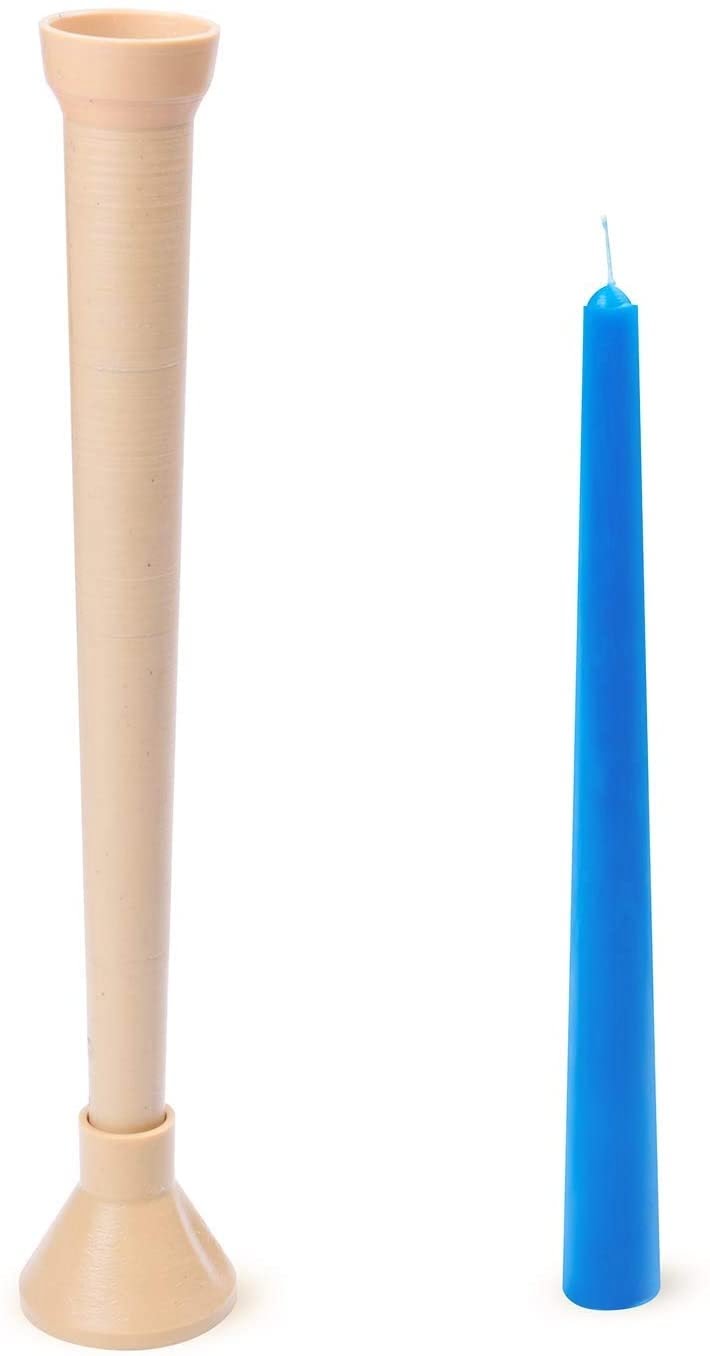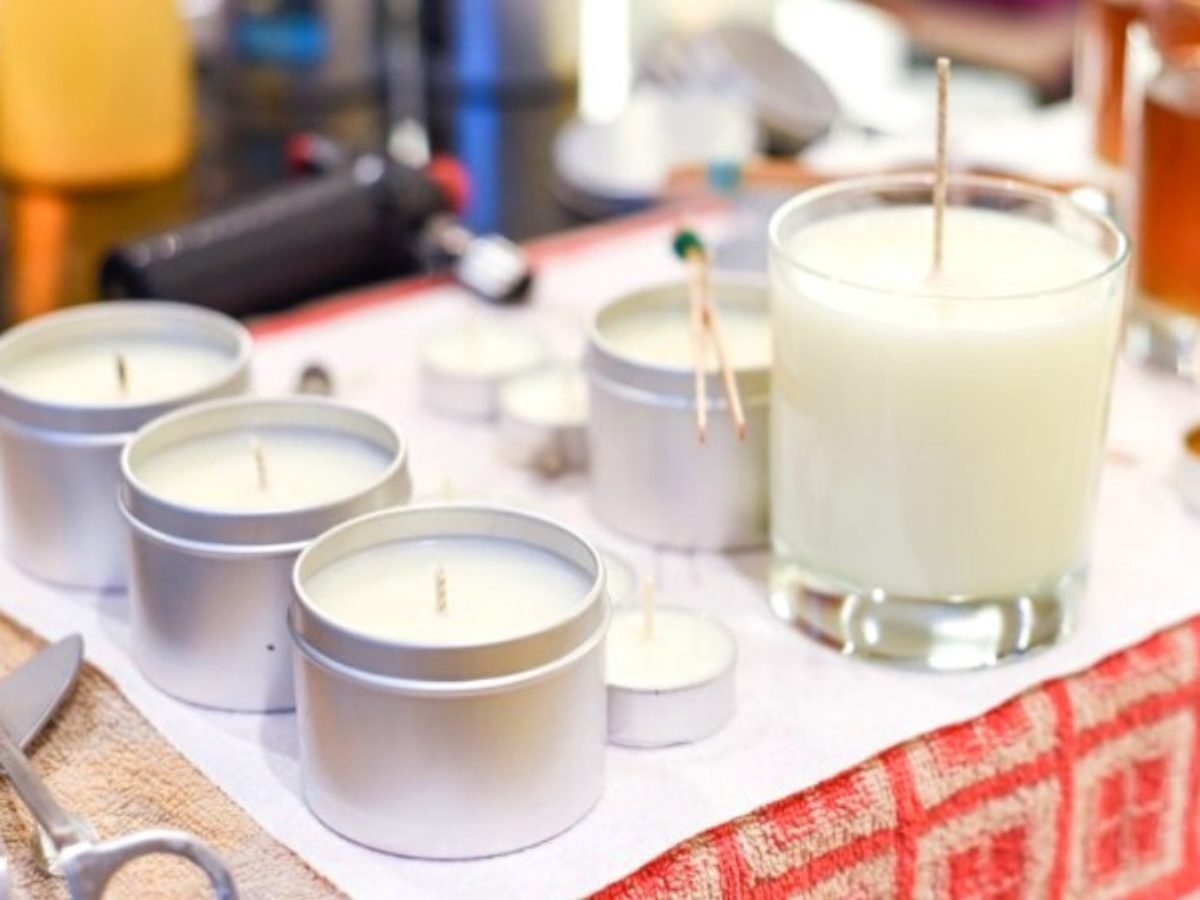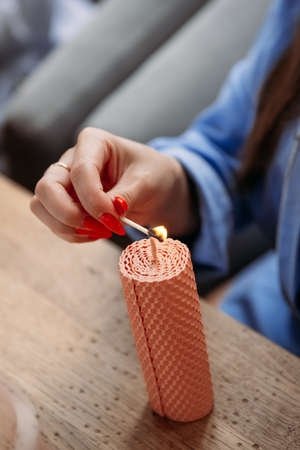Introduction
Wicking is an essential skill when it comes to candle making. Whether you’re a beginner or experienced in the craft, selecting a high-quality wick suitable for your project can make or break the finished product. Wicks help transport the melted wax from the container up to the exposed wick tip, creating a remarkable flame.
When picking out your wicks for your candles, there are some important factors to consider. Start by researching what types of waxes your supplier offers, because different waxes produce different levels of heat and even scent strength. Wax also has a unique amount of viscosity which need to be considered when investing in wick material. Many wax manufacturers provide recommended wicks, so do select from those first. If no suggestions are provided, then look for low smoking wicks specifically designed for gel and paraffin containers that are labeled “Flat Braid,” “Hemp Core” or “Cored Wick” on the packaging, as these generally work best with most container candles.
It’s also important to remember that experiment until you find the right combination of wick size and type of wax that suits you best! Different mixtures can require you to adjust not only types of wicks but also lengths as well. Make sure to trim down any frayed ends once you’ve determined its right fit — usually 1/8 inch above the top of each candle – before proceeding with the manufacture process.. Finally ensure its set correctly at about an angle 45 degrees before lighting it up; doing so will help prevent incomplete burning which can lead to smokey odors and wet spots from melted residue around the surfaces near your candle flame area to create an inviting ambiance.
What Is Wick and Its Uses in Candle Making
Wick is an integral part of making candles, as it helps control and manage the burn rate of the candle. When a wick is lit, the heat from the burning flame will travel up the wick fibers, heating and melting the wax or other combustible material to produce light and heat. This is why having a good quality wick is so important in successful candle making. There are a variety of types of wicks on the market designed specifically for different types of candles, such as paraffin, beeswax, soy waxes, and more. The type of wick chosen should be based on the type of wax being used as well as desired burning characteristics such as size and speed of flame. Generally speaking, larger diameter (fatter) wicks are better for larger containers, while smaller diameter (skinnier) wicks are better for small containers. Different ratios between wick length and width can also be used to create faster or slower burning candles depending on what results you want to achieve. Additionally, using a higher quality pre-tabbed cotton core with a braided paper fibre outer layer ensures greater stability when lit compared to single threads or multiple plied threads twisted together when it comes to burning stability. With all these features in mind when choosing your wick it’s now time consider any additives that may help enhance performance further or customize your product even more. This might include tinning or coating with natural waxes like beeswax or carnauba which both have good adhesive qualities that can help keep your wick centred in your container while an extra dose of fragrance loading means adding just enough scent to ensure its presence without drowning out other nuances like colour and textures present within your mix.
Different Types of Wick
There are a number of different types of wick that can be used for candle making, each with its own advantages and drawbacks. Common types include cotton, zinc-core, paper core, and wood core wicks. Cotton wicks are relatively inexpensive, easy to use, and burn cleanly without producing much smoke. However, they do not hold the melt pool well so they must be frequently trimmed when used in candles. Zinc-core wicks contain a metal center that helps them maintain the position even after the flame has gone out. This makes them ideal for beeswax candles or paraffin as they tend to burn for longer periods of time before needing to be trimmed. Paper core wicks also help maintain their position but often produce slightly more smoke than cotton wicks. They are best used with softer waxes like soy or tallow with large containers or multiple wicks. Wood core wicks offer great stability but create more smoke and must always be extinguished instead of being put out by blowing on them due to their flame retaining abilities; these are often seen in multi-wick natural container candles like those made from pinecones or other plant materials.
Which Wick Is Right for Your Candle
The type of wick you choose for your candle can make or break the success of your project. Generally speaking, a regular candle has either a flat (square) or round wick, while specialty candles like tea lights and pillars often use something else. Each type of wick is specially designed to provide an optimal burn experience when used with the right wax and wick size.
When it comes to choosing a wick for your candle, there are several factors to consider such as: the wax formulation; the desired size and shape of the flame; and any fragrance oil that may be added during the melting process. The most popular types are made from cotton threads which have been treated with a series of coatings – primarily zinc or tin – designed to dampen or enhance the burning effect by controlling surface tension and flame height. Zinc core wicks are heavier and stiffer than those made from tin, providing more smoke-free burning but requiring special measurement in order to prevent excessive heat. Tin core wicks tend to be softer, allowing better heat dispersion across the melt pool leading to less sooty residue on containers.
For optimum results, look for a specific chart showing recommended batts according to different variables like volume/height of container, diameter/depth of pour, soy or paraffin wax choice etc.. This will ensure maximum life when combined with correct sizing factor for each individual situation. If this isn’t available then you may need to experiment with different sizes until you find one that gives you what you want from your finished product
Preparing and Using Wick for Candle Making
Wick for candle making is an integral part of the process. Candles need a wick to keep the flame burning in order for them to give off light. Before using any type of wick, it must first be prepared. This can include preparation such as washing, priming with wax and needle threading. Washing wicks gets rid of dust, debris, oil or other contaminants before they are used in your candles while priming helps ensure that they give off a clean and even burn when lit. Needle threading is a popular technique which requires threading the wick around a needle in order to make sure it stays straight and taut when inserted into the melted wax.
Once prepared, the wick can then be inserted into the melted wax at a certain length depending on how big you want your candle to be. The further down you insert it, the bigger your candle will be but be aware if you insert too far down then your candle may not burn correctly due to insufficient oxygen reaching its flame or not enough heat provided by your flame. You may also need to adjust how close or far away from each other two adjacent wicks should be placed based on their size and diameter in order to allow an even distribution of heat and light when lit.. Lastly, after placing all of your wicks carefully always double-check that they are sitting straight up so that as soon as you light them will do so without trouble!
Troubleshoot Doweling and Centering Wick
Doweling and centering wick for candle making is an important technique that helps ensure your individual candles burn correctly. For wicks of proper length, the wick must be seated so that the candle extends up from the base of the container or mold evenly. The most common issue with doweling and centering a wick is that it often either won’t stay centered or doesn’t always reach lower into the wax pool far enough to provide a good burn.
To ensure you have good wicking and an even burn, first make sure the diameter of the wick is appropriate for the size of your container. Choose a pre-waxed cotton core or braided & flex wire core (depending on diameter), then measure how much of each type you need based on this guide. Use a heat source to melt just enough wax to hold your tab in place by creating a secure bond. Next, wrap thread around the base of the container in opposite directions to help keep it centered and let cool before pouring in wax. Finally, check positioning after pouring for any adjustments needed before burning your candle.
If you find that when burning your candle, it is not burning evenly or quickly enough, chances are there was too much wax melted during tabbing resulting in incorrect proportioning between “wick-to-wax” as well as improper flame set up due to a lack of proper air estuary within its cavities during production. Try trimming down excess wax off the top edge of your mold/container and use heat sets to help push upcenter tabs more firmly against walls if needed before pouring more wax in second batches if necessary.
How to Buy Wick for Candle Making
When shopping for wick for candle making there are specific steps that should always be taken. These include the size and type of wick to be used, as well as where to find it.
Firstly, you need to determine the intended size of candle that you’ll be making when selecting the correct wick. This can easily be done by looking at the diameter of your container or measuring it with a ruler if necessary. Generally speaking, larger containers will require larger wicks; smaller containers will require smaller wicks. It’s important to remember that too large a wick may cause over burning and smoke while too small a wick may not give off enough light or burn steadily.
Next, you must decide between cotton and hemp core wicks — each having its own attributes and applications depending on what type of wax is being used and what scent you desire to achieve in your finished candle product. Natural fibers such as cotton are better suited for use with soy waxes while hemp-fiber based ones work best with paraffin based waxes such as beeswax. Likewise, both natural fibers ignite easily creating a bigger flame which helps with more successful scent dispersion when coupled with fragrance oils or other scents chemistry additives when making candles .
Lastly, quality suppliers should be researched and selected from who offer a range of convenient delivery services and local pickup options for those who prefer not to buy online etc. It is important to research multiple suppliers before buying so that sure you are getting your desired product at the lowest possible price available!
Conclusion
When you are working with wick for candle making, it is important to acquire knowledge and wisdom as you go. First, you should understand the type of wax you will be using and what kind of wick will work best with it. You must also select a good quality wick and cut it accurately according to your candle size. Secondly, ensure that the candles are properly placed so that the heat from the flame can reach the entire length of the wick. Finally, consider various tricks such as priming and maintaining an adequate wick length based on the size of your candle—all of which can help create a consistent burn. With patience and practice, you can become an expert in using wicks for candle making!

Welcome to my candle making blog! In this blog, I will be sharing my tips and tricks for making candles. I will also be sharing some of my favorite recipes.

